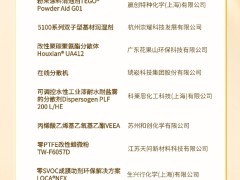据俄罗斯油气网12月27日奥斯陆报道,挪威著名能源研究和商业情报公司雷斯塔能源公司( Rystad)27日公布的统计数据显示,2021年,东南亚地区平均油气日产量从2020年的506万桶油当量降至486万桶油当量,与2019年疫情爆发前的550万桶油当量相比,大幅下降了12%。
在石油市场出现前所未有的混乱之际,东南亚地区运营商减缓了活动水平,努力弥补疫情引发的生产损失。
预计这一下降趋势将持续到本十年中期。
Rystad预测,尽管2022年产量将保持稳定,但到2025年前,东南亚地区的油气平均日产量将再下降10%,至430万桶油当量左右。
相比之下,东南亚地区的天然气日产量在2009年至2019年期间保持稳定,约为208亿立方英尺。尽管预计天然气销量将会上升,以抵消2020年8%的产量下降,但预计2021年的天然气日产量将比2020年下降约2%,约为190亿立方英尺。
对大多数东南亚国家来说,超过60%的油气产量来自成熟油气田,这些成熟油气田的产量占其资源量的50%以上。
未来几年,这些成熟油气田的产量可能会持续下降,预计到2030年前,60%的产量可能来自目前处于最终投资决定前阶段的项目。
Rystad说,“因此,东南亚地区上游前景背后的驱动力将是新开发项目的批准”。2020年是东南亚地区批准活动的噩梦之年,6处资产中只有约3亿桶油当量的石油资源获得了最终投资决定。Rystad表示,随着运营商试图在2021年继续推进,东南亚地区已有10多个项目获得了最终投资决定,储量约为7.5亿桶油当量,新油田投资约30亿美元,其中马来西亚占85%。
2022年东南亚地区不太可能看到支出的大幅增加,预计全年油气投资将在150亿至200亿美元之间。
由于国家石油公司将掌握控制权,并将重点放在顶级生产油气田上,2022年印尼和泰国成熟成熟油气田的钻井活动增加可能会推动投资。
李峻 编译自 俄罗斯油气网
原文如下:
Southeast Asia’s oil & gas output at lowest level since 1998
Daily average hydrocarbon production tumbled to 4.86 million boepd in 2021, down from 5.06 million boepd in 2020, and a massive 12% drop compared to the pre-pandemic volumes of 5.5 million boepd in 2019, Rystad Energy data shows.
Operators have struggled to regain production losses triggered by the pandemic as they slowed down activity levels amid an unprecedented disruption in oil markets.
The decline is projected to continue into the middle of the decade.
Although volumes will remain stable in 2022, production will drop an additional 10% by 2025 to around 4.3 million boepd versus current levels, predicts Rystad.
By contrast, natural gas production in the region stayed steady between 2009 and 2019, at around 20.8 billion cubic feet per day (Bcfd).
Despite expectations of a rise in gas sales volume that would counter the 8% fall in production in 2020, volumes are expected to be down around 2% this year compared to 2020, at about 19 Bcfd.
For most of Southeast Asia, over 60% of output comes from mature blocks – fields producing more than 50% of its resource.
Volumes from such blocks are likely to see a consistent decline over the next few years, with an estimated 60% of production by 2030 likely coming from projects currently at the pre-FID stage.
Consequently, the driving force behind the region’s upstream outlook will be the sanctioning of new developments, reported Rystad.
2020 was a nightmare year for regional sanctioning activity, with only around 300 million boe of resources from 6 assets reaching FIDs.
As operators tried to move forward in 2021, the region has seen more than 10 projects secure FIDs, with around 750 million boe of reserves and some $3 billion in greenfield investment, with Malaysia accounting for 85% of the total, said Rystad.
Southeast Asia is unlikely to see a substantial increase in spending in 2022, with investments projected to be in the range of $15 billion to $20 billion across the year.
Investments will likely be driven by increased drilling activity in mature blocks in Indonesia and Thailand, as NOCs take the reins and focus on top-producing blocks.
免责声明:本网转载自其它媒体的文章,目的在于弘扬石化精神,传递更多石化信息,并不代表本网赞同其观点和对其真实性负责,在此我们谨向原作者和原媒体致以敬意。如果您认为本站文章侵犯了您的版权,请与我们联系,我们将第一时间删除。







